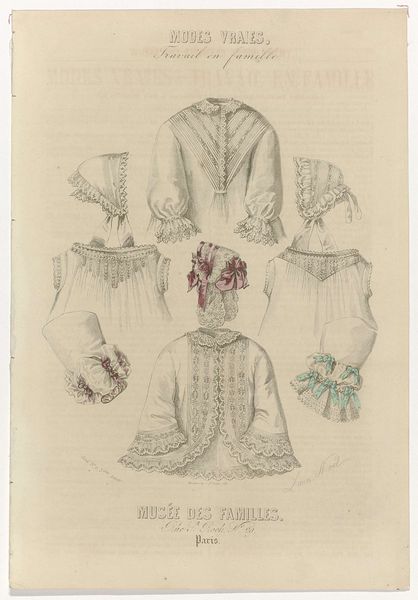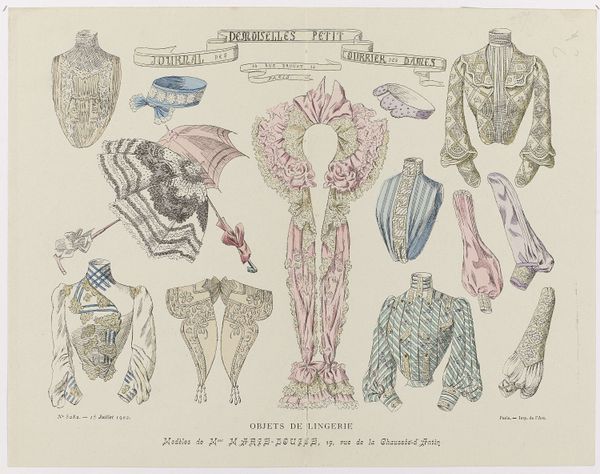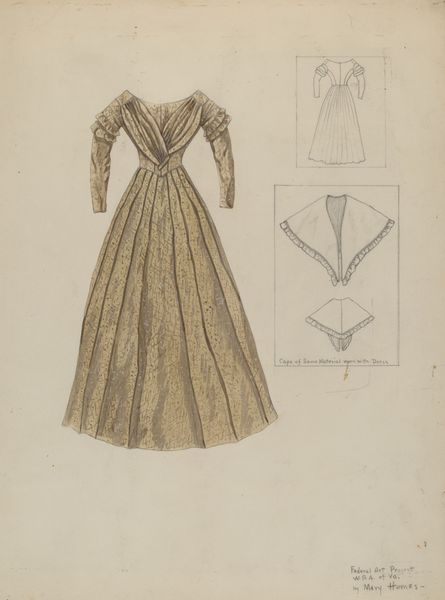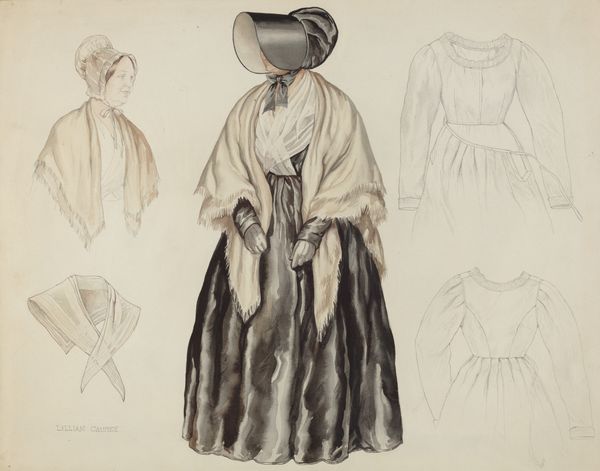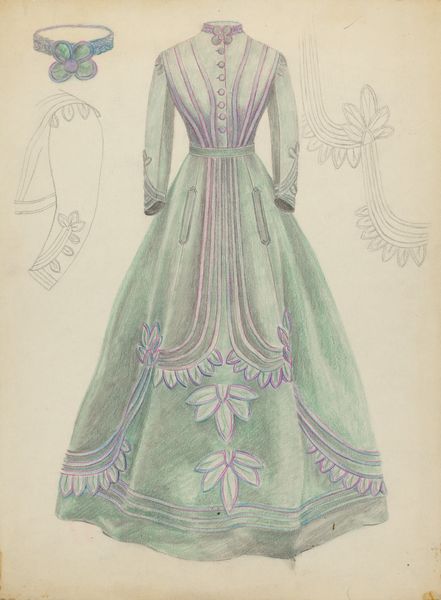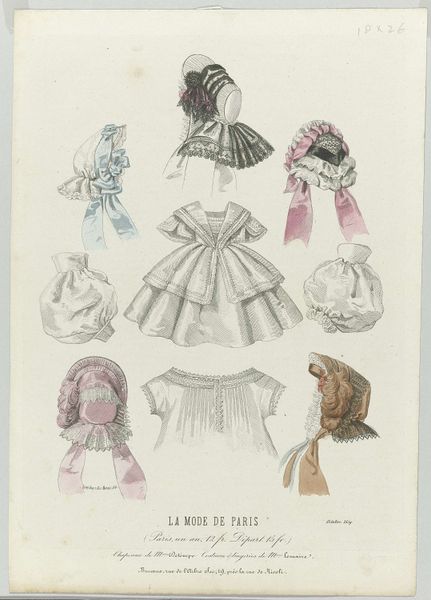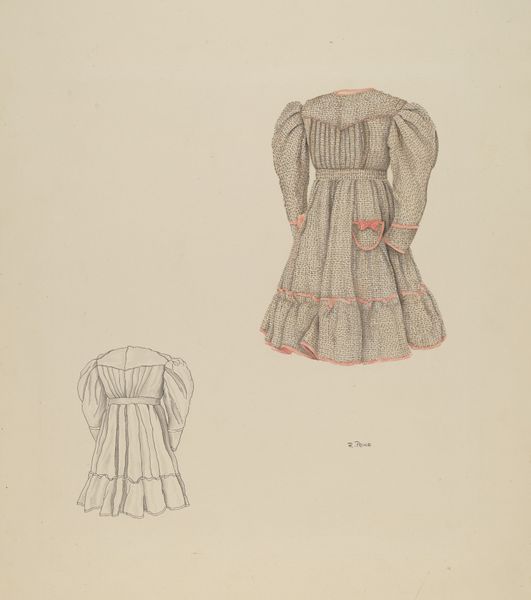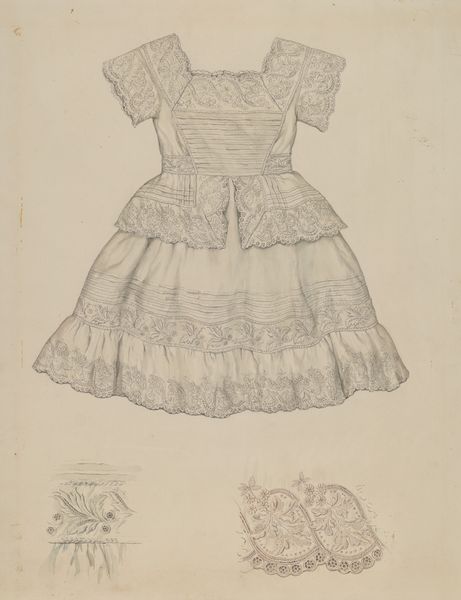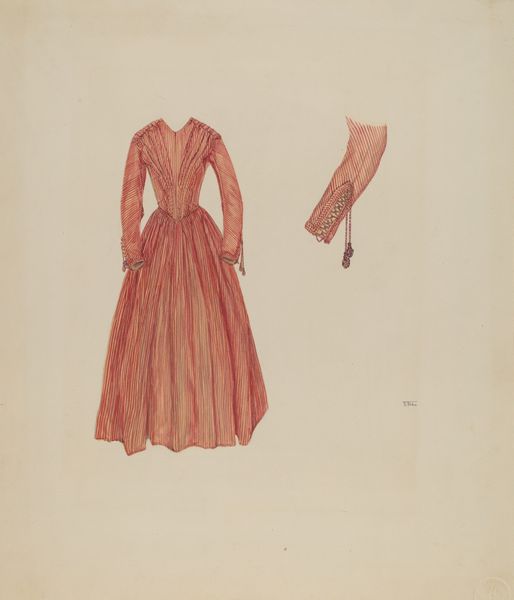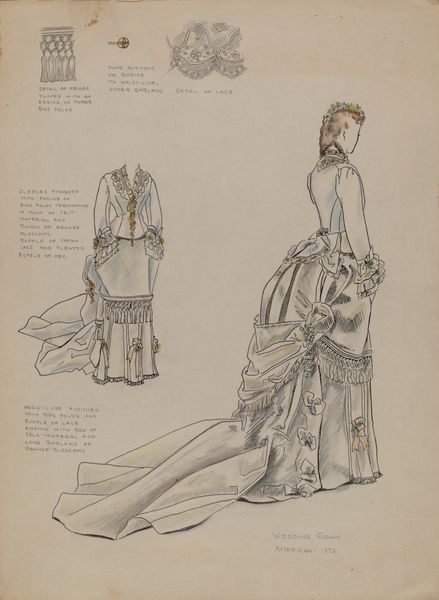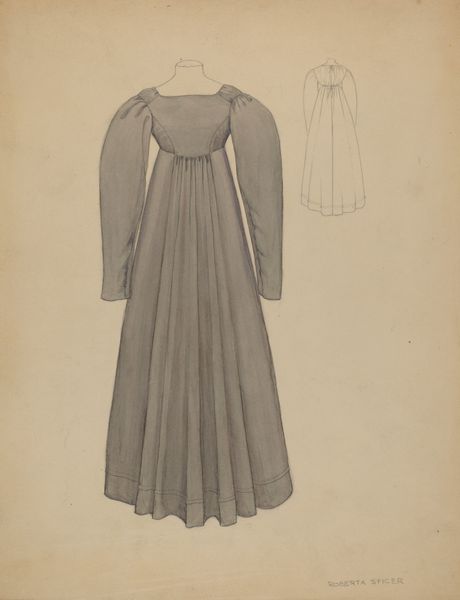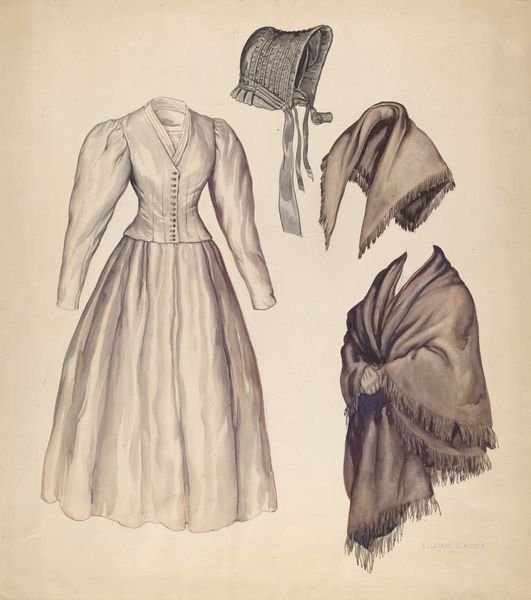
Journal des Demoiselles et Petit Courrier des Dames, 1 Janvier 1903, No. 5295 : Corsage de soiré (...) 1903
drawing, graphic-art, print
drawing
graphic-art
underwear fashion design
art-nouveau
fashion mockup
collage layering style
fashion and textile design
historical fashion
traditional dress
textile design
fashion sketch
dress
clothing design
bridal fashion
Dimensions height 252 mm, width 327 mm
Curator: Here we have an interesting artifact: a print from "Journal des Demoiselles et Petit Courrier des Dames," dated January 1, 1903. It presents various designs for women's evening wear, including bodices, blouses, and dresses. The anonymous artist captured not just designs, but also insight into the culture and process of dressmaking itself. Editor: Oh, it's just lovely! It feels like stumbling upon a forgotten world of elegance. The colors are so delicate—those pale pinks and blues—and the frills give the designs this almost ethereal quality. What were they thinking, I wonder, while designing these lavish garments? Curator: What strikes me is the implicit network of labor represented. Consider the sheer number of hours required for such elaborate embroidery, beadwork, and lace. This was very often the realm of exploited, unregulated workers--women in particular. A "corsage de soiree" carries a heavy cost when viewed through that lens. Editor: Yes, those frothy confections do conceal layers of invisible toil. Still, I see ingenuity at work—almost like architectural drawings for clothing. These designers shaped not just fabric, but also aspirations. Each embellishment holds a whispered promise of transformation. It makes me wonder what stories they could tell, these dresses. Curator: Precisely, these journals did more than display designs. They prescribed social conduct, reinforcing rigid hierarchies based on gender and class. Even something as ephemeral as fashion sketches contributes to shaping the world as it becomes materially manifest. What this tells me is there's an entire ecosystem of creation at play here. From labor exploitation all the way to elite consumptions of Parisian dressmaking artistry in a society defined as unequal by the rigid laws and biases inherent at the time period. Editor: Perhaps the dreams sewn into these gowns were not entirely realized then. Yet, they remain, like faint echoes—glimmers of beauty and freedom in a society still fighting to breathe. The legacy lives, in patterns that are often repeated. Curator: So, let’s keep that history in mind as we explore what that future fashion became. Editor: An intriguing juxtaposition!
Comments
No comments
Be the first to comment and join the conversation on the ultimate creative platform.
